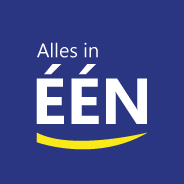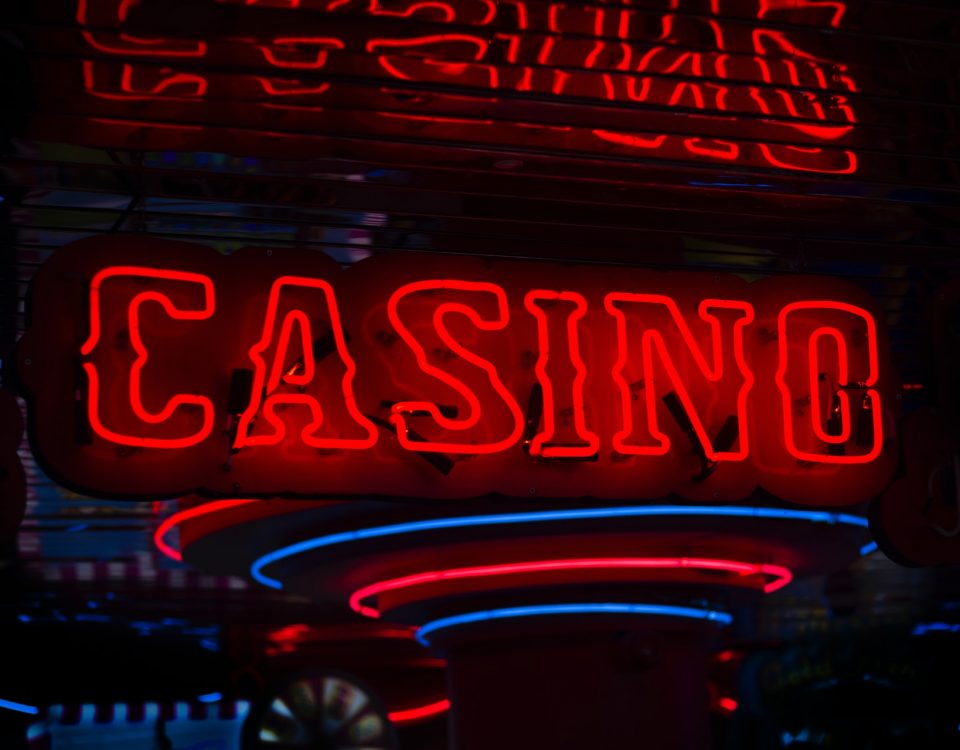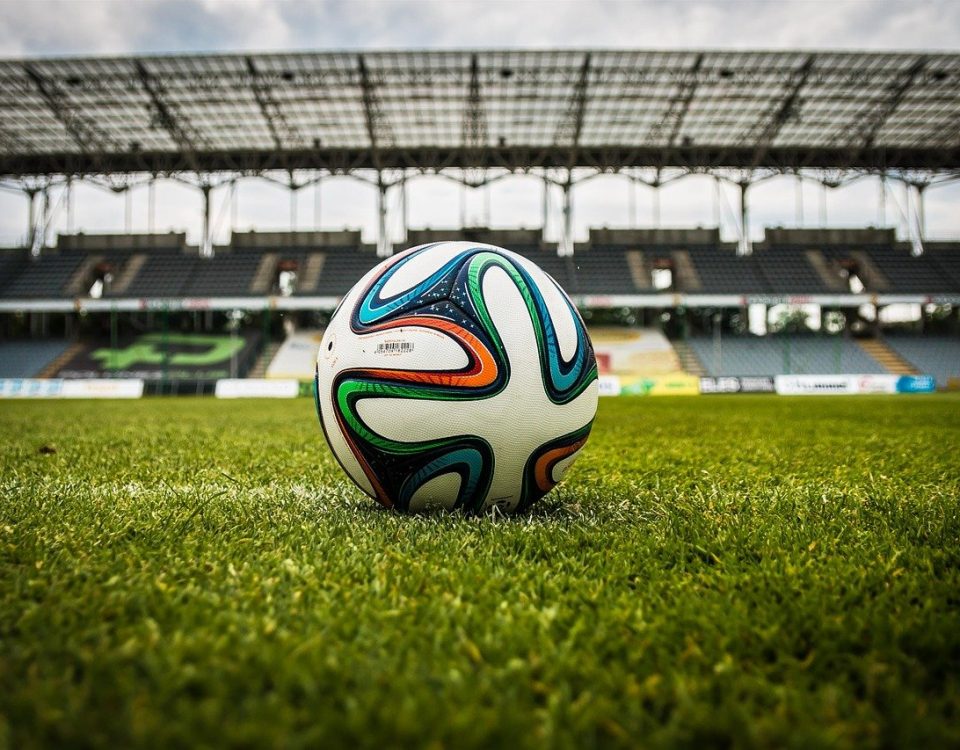- Klantenservice
- shelley duvall children

Een online casino kiezen
28 december 2022The other thing that I found to be anxiety provoking was the thought of the presentation and the fact that I had to rely on other people to produce a good standard of work to be complied in the presentation. The essence of Kolb is similar to the other models discussed so far. This might be a new experience or situation, or a reinterpretation of existing experience in the light of new concepts. Gibb's and Kolb's Reflective model In this report I am going to evaluate the difference between Gibbs (1988) and Kolb (1984) drawing primarily on Gibbs's reflective model.The Kolb cycle 1984 was published before Gibbs 1988 David A. Kolb published his conception after an experimental test on a book "Experience as the Source of learning and development" while Gibbs published his . The second stage is the reflective observation stage whereby the person reflects on the experience. I had to rely on the rest of the group members having good presentation skills I think its this reason why I decided to take the lead for the first few sessions which could have resulted in some members not feeling able to speak up this has also been found in MDTs by Lichtenstein et al. According to Kolbs theory, learners acquire knowledge through a cycle of abstract conceptualization, followed by active experimentation. The cookies is used to store the user consent for the cookies in the category "Necessary". We do NOT offer any paid services - please don't ask! Kolbs (1984) cycle consists of four stages. This is closely followed by active experimentation, and the cycle goes round again, and the learner will consolidate their learning during their reflective practice following on from the concrete experience. So, Whats next? In short, the iterative and deliberate approach to learning, if used correctly by the individual, can prove very effective. However, you can not remember how to clock in and clock out of the visit and so do not log your visit. The model is based on Kolb's Learning Cycle, which suggests that we learn by engaging in an activity or 'experience'. Kolb's Cycle of Learning. Although apprehensive and anxious I was excited about the opportunity to make more friends and get to know more of my class mates. Preferring technical tasks rather that . While this can be beneficial for some learners, it can also be overwhelming and lead to feelings of frustration. Abstract conceptualization is a crucial stage in the learning process, as it is when learners start to develop a deep understanding of the subject matter. 3. . Other members of the group, because of different life experiences to mine, were comfortable and sat with the disagreement with some members thriving off it. Kolbs model creates an action plan similar to that in Gibbs (1988) model. From the learners perspective, solitary reflection can be an intensely emotional concrete experience, and the action of programming a computer can be a highly abstract experience.[1], University of FloridaGainesville, FL 32611UF Operator: (352) 392-3261Website text-only version, Center for Instructional Technology and Training. Kolb sees learning as a cyclical, four-stage process where the student acquires knowledge from each new experience. Next, we look at the different cultures that prevail in organisations. Everyone in the group was apprehensive about presenting but the overall nerves were no more than you would normally expect. Experiential learning is common during internships and other forms of on-the-job training designed to complement conventional educational programs. In order to progress past the concrete experience stage, the learner must be able to reflect upon their experience. As the Kolb Method became more and more prevalent among theorists and educators, its pragmatic applications began to be understood. Abstract Conceptualization (AC): thinking, Kolb, D., Joy, S (2008). Deciders have a preference for abstract conceptualization and active experimentation. This learning experience consists of four stages: These four stages, or steps, of learning typically move through a cycle that begins with a student having a concrete experience and ends with them actively experimenting with the knowledge they gained. They want to consider all possible angles and implications of a problem and they never fail to see new approaches and solutions. Kolb also defined four distinct learning styles based on each stage of the cycle. Kolb [47] defined learning as a . At this stage, learners do not yet have much understanding of the subject, but their knowledge base is growing. Kolb's cycle follows four stages. (download the rest of the essay above). They begin to see the connections between ideas, and they start to develop their own theories about how things work. The Four Steps of Kolb's Learning Cycle. In other words, the individual learns through action. The Kolb reflective cycle was created by American educational theorist David Kolb. Are there cultural differences in learning style? Below is a grid that identifies the various types of learners and which stage of learning they lean toward. FOR STUDENTS : ALL THE INGREDIENTS OF A GOOD ESSAY. For instance, a classroom lecture may be an abstract experience, but it is also a concrete one, when, for example, a learner admires and imitates the lecturer. Experiential Learning Model Example Kolb s Experiential Learning . David Kolb developed a model of reflection, which he calls Reflective Practice. Some theories will succeed, while others will inevitably fail. Why did the situation arise? Continue exploring this page, or request assistance from the Center for Instructional Technology and Training. The Kolb Experiential Cycle is not just a model of reflection. In this report I am going to evaluate the difference between Gibbs (1988) and Kolb (1984), drawing primarily on Gibbs's reflective model. The Five Stages Of A, An Entire MBA In Four Weeks By FourWeekMBA, Business Strategy Book Bundle By FourWeekMBA, Digital Business Models Podcast by FourWeekMBA, [MM_Member_Data name=membershipName] Home Page. During the seminar I felt relief when I knew I was in a group with a friend of mine but I was still nervous and felt apprehensive towards the other group members. 15 . The beauty of the Kolb model is that it can be applied to any experience where you want to maximise learning. Concrete experience: In the first stage of the cycle a person has an experience that serves as the basis for observation. So, you change you decide to change the behaviour to taking rough notes of only the most important information. Kolb identified four different learning preferences, or learning styles, after observing the cycle of learning. The second step of Kolb's theory, reflective observation, involves . Learning is better viewed as a process, not in terms of outcomes. Kolb's learning cycle is where the learners understand the situations and the ideas from a different points of view. This process of drawing conclusions from an experience is abstract conceptualisation. Most people tend to favor one stage over the others, but all four stages are necessary for effective learning. We develop theories about the world . Criticism of Experiential Learning Theory . It covers what the model of reflection is and what the four stages of learning and the different learning styles are. They learn best by clear and briefly formulated rules and principles they can immediately implement in practice. Because reflective practice is cyclical, you should continuously reflect on the actions that you have put in place. This resulted in legal records not being maintained, which could potentially have resulted in wrong decisions being made (e.g. We are very happy to hear from you, and on our upcoming blogs, we will try to improve it. Within the dimensions, the learning styles theory is based on a stage theoretical model of reflection. Learn. David Kolb bases his four stages of learning on two major opposite dimensions, namely Concrete versus Abstract and Active versus Reflective. It can be anything from taking part in a sport, to visiting a foreign country, to listening to music in a different language. History of Kolb's Learning Cycle. This is called abstract conceptualisation because it allows them to see the bigger picture. How to cite this article: Kolb's reflective learning model is one of three frameworks of personal reflection I will highlight in this presentation. This model is a cycle of four interlinking stages, which can be applied to many different types of activities. * This essay may have been previously published on Essay.uk.com at an earlier date. They would like to be able to ask questions and discuss topics. The learner applies his / her thoughts to the world around them to see whats going on. if(typeof ez_ad_units != 'undefined'){ez_ad_units.push([[320,50],'emozzy_com-medrectangle-3','ezslot_15',175,'0','0'])};__ez_fad_position('div-gpt-ad-emozzy_com-medrectangle-3-0');if(typeof ez_ad_units != 'undefined'){ez_ad_units.push([[320,50],'emozzy_com-medrectangle-3','ezslot_16',175,'0','1'])};__ez_fad_position('div-gpt-ad-emozzy_com-medrectangle-3-0_1'); .medrectangle-3-multi-175{border:none !important;display:block !important;float:none !important;line-height:0px;margin-bottom:7px !important;margin-left:auto !important;margin-right:auto !important;margin-top:7px !important;max-width:100% !important;min-height:50px;padding:0;text-align:center !important;}In 1984, David Kolb published his model of learning styles, from which he created his inventory of learning styles. What is Gibbs Reflective Cycle? attempting to score goals Reflective Observation . Reflective observation - RO. Reflective Observation (RO): watching. Kolb's reflective cycle in classroom practice. Not to mention the fact that it really helps individuals to develop better self-awareness. Reflective practice is a mixture of deliberate and calculated thinking alongside more spontaneous thoughts (Neilson, Stragnell & Jester, 2007). Converging learners (through convergent thinking)prefer technical tasks where they can solve problems using their knowledge. Active experimenters like to try out new ideas and see what works best.if(typeof ez_ad_units != 'undefined'){ez_ad_units.push([[300,250],'emozzy_com-large-leaderboard-2','ezslot_3',607,'0','0'])};__ez_fad_position('div-gpt-ad-emozzy_com-large-leaderboard-2-0'); Kolbs learning cycle is a widely accepted theory of how people learn best. As we discussed how we wanted to present our presentation I felt confused as there was a suggestion by a team member that we should all dress up as e.g. Kolb's Cycle of Reflective Practice. By making access to scientific knowledge simple and affordable, self-development becomes attainable for everyone, including you! The research includes interpersonal and environmental transactions. You may also reflect on your commitment to making detailed notes during training, but found that by constantly writing, you were always behind and sometimes missed part of the training. This leads to the final element of the cycle - taking an action. Tuckmans Stages of Group Development explained: theory and criticism, CLEAR Coaching Model explained: the theory, the questions and a template, STARR Method explained: the theory, example questions and the format, Johns Model of Reflection explained: the definition, steps and an example, John Dewey: his biography, education theory, quotes and books, What is Impression Management? This cycle is often used to teach people new skills or train people in a particular field. It proposes the use of experience as the basis for active learning and participation (Bisson, 2017). Reflective practice is a mixture of deliberate and calculated thinking alongside more spontaneous thoughts (Neilson, Stragnell & Jester, 2007). Once learners have reached this stage, they will want to test their ideas by actively experimenting. How did the individual act? It is important for learners to be aware of their own learning preferences at this stage, as this will help them to make the most of the experience. Experiential Learning Businessballs. Learn Kolbs Cycle within 3 Minutes [Video Guide], How to Become a Counselor in 7 Steps? Example activities range from improving your mood to implementing a new work delegation method. . Students can begin their learning . This is the phase where learners are actively engaged in an experience and are able to reflect on what they are doing. Effective learning is achieved when a learner progresses through each stage. Psychologist David Kolb first outlined his theory of learning styles in 1984. They do well at verbal reasoning and they prefer to work independently. Kolb's experiential learning style theory is typically represented by a four-stage learning cycle in which the learner 'touches all the bases': 1. Kolb shows how reflection on an experience leads the individual to form concepts about that experience, and to be able to generalise from one experience to another. Join our learning platform and boost your skills with Toolshero. Find out more. They may even begin to make mistakes, as they are still trying to figure things out. This is the stage where learners start to understand the abstract concepts behind what they are observing. And what would happen if I stopped doing it? 1. The goal is not necessarily to address a specific . Examples of Kolb's learning cycle. Experiential learning is a hands-on learning approach that encourages students to actively participate in their own learning. Yet, we do not reflect on our practice. They are practical people that do not like wasting time. Experiential learning model Lessons for reflective. By doing something, people gain experience (doer). David Kolb's learning cycle allows you to structure a piece of reflective writing around four distinct stages. The theory is still relevant today, more than 30 years after it was first proposed. Most of the group as a whole were anxious about the pentation although one member wasnt because they are used to giving presentations. Kolb's (1984) learning cycle . This model of reflection, the Kolb Reflective Cycle is also known as the four stages of learning or the Kolbs Learning Styles. In this article, were going to cover who David Kolb was, before diving into a detailed explanation of how Kolbs Reflective Cycle works. Kolb's Learning Cycle Summary of the Kolb's four steps in a learning cycle The Kolb's learning theory consists of unique preferences that are also known as learning styles. For example, if they were playing basketball, they might conclude that they need to improve their technique. Some learners may also prefer to learn through hands-on activities, while others may prefer to learn through observation and reflection. . What is your experience with these learning styles? Likewise a learner may work hard to create an abstract model in order to make sense of an internship experience or experiential exercise. 2. Because of such diversity, people can go through the Kolb Reflective Cycle in a more complete and balanced way so that each phase gets a proportionate amount of attention. , Zapalska, A., Brozik, D (2006). Once this process has been undergone completely, the new experiences will form the starting point for another cycle. Kolb's Learning Model. This cycle allows you to look at your experiences reflectively and thoughtfully and can be used in various settings. Is the David Kolb Reflective Cycle applicable in todays management and personal development methods? Active Experimentation (AE): doing. Concrete Experience - the learner encounters a concrete experience. My slight perfectionist personality streak came out resulting from self-inflicted pressuring myself to come out of university with a good degree. Kolb's (1984) cycle of reflective practice is a model designed to help people learn from their experiences. Yet, for group learning, it might be less appropriate, as it needs to consider the various ways individuals within the group learn. Here goes. Ideally, the learning cycle represents a spiral that covers such dimensions as reflection, thinking, experiencing, and acting. This is a concrete experience of using the new system. David Kolb developed a model of reflection, which he calls "Reflective Practice". The Kolb cycle 1984 was published before Gibbs 1988, David A. Kolb published his conception after an experimental test on a book "Experience as the Source of learning and development" while Gibbs . By being aware of their own learning inclination, learners can make the most of the Concrete Experience stage and ensure that they gain the maximum benefit from it.if(typeof ez_ad_units != 'undefined'){ez_ad_units.push([[300,250],'emozzy_com-box-4','ezslot_2',179,'0','0'])};__ez_fad_position('div-gpt-ad-emozzy_com-box-4-0'); Reflective Observation is the second stage of Kolbs learning cycle. One of the criticisms of Kolbs Experiential Learning Theory is that it focuses too much on the abstract and active stages of learning, and does not give enough attention to the other stages. active experimentation. The trainee will repeatedly implement the learning cycle using several methods like separate tuition, coaching, demonstration, reading, practice, getting feedback from . David Kolb's model of reflective practice involves four stages: concrete experience, reflective observation, abstract conceptualisation and active experimentation. EssaySauce.com is a completely free resource for students. [Complete Guide], What is Crypto and How Does it Work? Experience In the first stage of this cycle, think about - and then write down -the situation you are There are no advantages to observing or reading, for example. Divergent learners are people and group-oriented, have broad cultural interests and tend to be imaginative and emotional. InExperiential Learning: Experience as the Source of Learning and Development(1984),Kolb defined learning as the process whereby knowledge is created through the transformation of experience (p. 38). The main advantage of Kolbs model is its ability to follow an iterative learning process. It is a theoretical model of how we learn. Concrete experience: we were split into groups in our seminar. David A. Kolb (with Roger Fry) created his famous model out of four elements: concrete experience, observation and reflection, the formation of abstract concepts and testing in new situations. People were taught how certain things interrelate and how they can be considered in a theoretical framework. The Learning Styles theory named the four stages of learning, made clear that there is not just one learning style but that there are more methods and that individuals have their own preferred learning styles. I love this article so much. Or if they were learning French, they might notice that they had trouble pronouncing certain words. All-round learners are often proficient in all of the four learning styles. For the sake of simplicity, the four learning styles can be displayed in a 22 matrix. In addition, you make the decision that whenever you are unsure about something, you will contact your manager for guidance and support straight away. Each style represents a combination of two of the stages mentioned in the previous section: This learning style relies on intuition over logic, with individuals preferring a practical, experiential approach. By following this cycle, students can ensure that they are getting the most out of their experiential learning experiences. ". Kolb presented his theory in the form of a diagram, which has since become known as the Kolb learning cycle. Most students having concrete experience in cooking were able to accommodate the new learning, and developing their metacognition as explained by Haley (2020). Due to not everyone turning up to every meeting it was hard to contact those who were absent to explain to them what they needed to do creating extra work. Sometimes people need to come to terms with (undesired) experiences before they are open to new views. Furthermore, they argue that even within these two stages, there is a lack of balance between the abstract and the active. Lets look at each of these stages individually. Was that article helpful? How am I feeling? I will try not to retreat from conflict by engaging and contributing rather than avoiding and/or running away from it. Reflective practice is often defined as when practitioners engage in a continuous cycle of self observation and self evaluation in order to understand their own actions and reactions they prompt in themselves and in learners (Brookfield, 1995; Thiel, 1999). These cookies will be stored in your browser only with your consent. It is an important step in the learning process because it allows learners to start making connections between their experiences and their existing knowledge. Kolb suggested that the ideal form of learning was one that integrated all four of these, integration being achieved by a cyclical progression through them in the way shown in Figure 4. Your rating is more than welcome or share this article via Social media! In a way, it resonates. The learner may also enter the cycle of learning at any step using a logical sequence. This conflict which caused me to take a back seat as leader and to dissociate from the group I think this is due to prior childhood trauma. He identified learning styles as habitual ways of responding to a learning environment. How students react to specific stages in the learning cycle helps identify their learning style. Reflective Observation requires both a willingness to reflect on ones own experiences and the ability to see those experiences from multiple perspectives. Basically, what Kolb sought to do was to bring "the . The Kolb reflective cycle is a holistic learning and development process based on the reflection of active experiences. Kolbs learning cycle is a well-known theory in the field of education. He represented these in the famous experiential learning circle that involves (1) concrete experience followed by (2) observation and experience followed . This is about translating your analysis and explanation into plans and actions moving forwards. It is only through Reflective Observation that we can truly learn from our mistakes and make meaningful progress in our lives. EssaySauce.com is a free resource for students, providing thousands of example essays to help them complete their college and university coursework. It was originally developed by American psychologist David Kolb in 1984. These learners excel at organizing diverse information into a clear and logical format and are enthused by ideas and abstract concepts. Finally, this style loves to experiment and stimulate new ideas and theories. The goal here is to develop theories from recurring themes, problems, or situations that can be used for similar situations in the future. David Kolb distinguishes four learning behaviours with four learning styles: Doers displays a combination of active experimentation and concrete experience. Education requires the resolution of conflicts between dialectically different modes of adaptation to the environment (education is full of tension by its very nature). The Leading Source of Insights On Business Model Strategy & Tech Business Models. Extract of sample "Kolb's Learning cycle". In other words, the individual learns through action. Moreover, Kolbs learning cycle provides a useful framework for structuring experiential learning activities. Different models apply to leaders when undertaking reflective exercises. As a result, learning is a holistic process where the student applies new insights and ideas toward continuous improvement. This stage is all about learning from your experience. In the online environment, it is important to find ways to engage students through the entire cycle of learning and incorporate activities or prompts that will help reveal student learning preferences present in your course. ADULT TEACHING AND LEARNING USER S . The cycle is based on adult learning theory and places the reflection process in a learning cycle of four states. Gibbs' reflective cycle was developed by Dr. Graham Gibbs in 1988 - a research leader in the Department of Behavioral and Social Sciences at the University of Huddersfield. Lesson Plan for Pain Management Assignment Example. Download the full version above. The point here is that it should be something that is new and/or unfamiliar. The first two stages of the cycle involve grasping an experience, the second two focus on transforming an experience. The stages of learning reflect how learners process and assimilate information: Stage 1: Concrete Experience (CE)assimilating information, Stage 2: Reflective Observation (RO)processing information, Stage 3: Abstract Conceptualization (AC)assimilating information, Stage 4: Active Experimentation (AE)processing information.
Can't Find Refund Button On Depop,
What Is K Restriction On Ny Cdl?,
What To Say When Someone Says You're Overthinking,
Articles K



